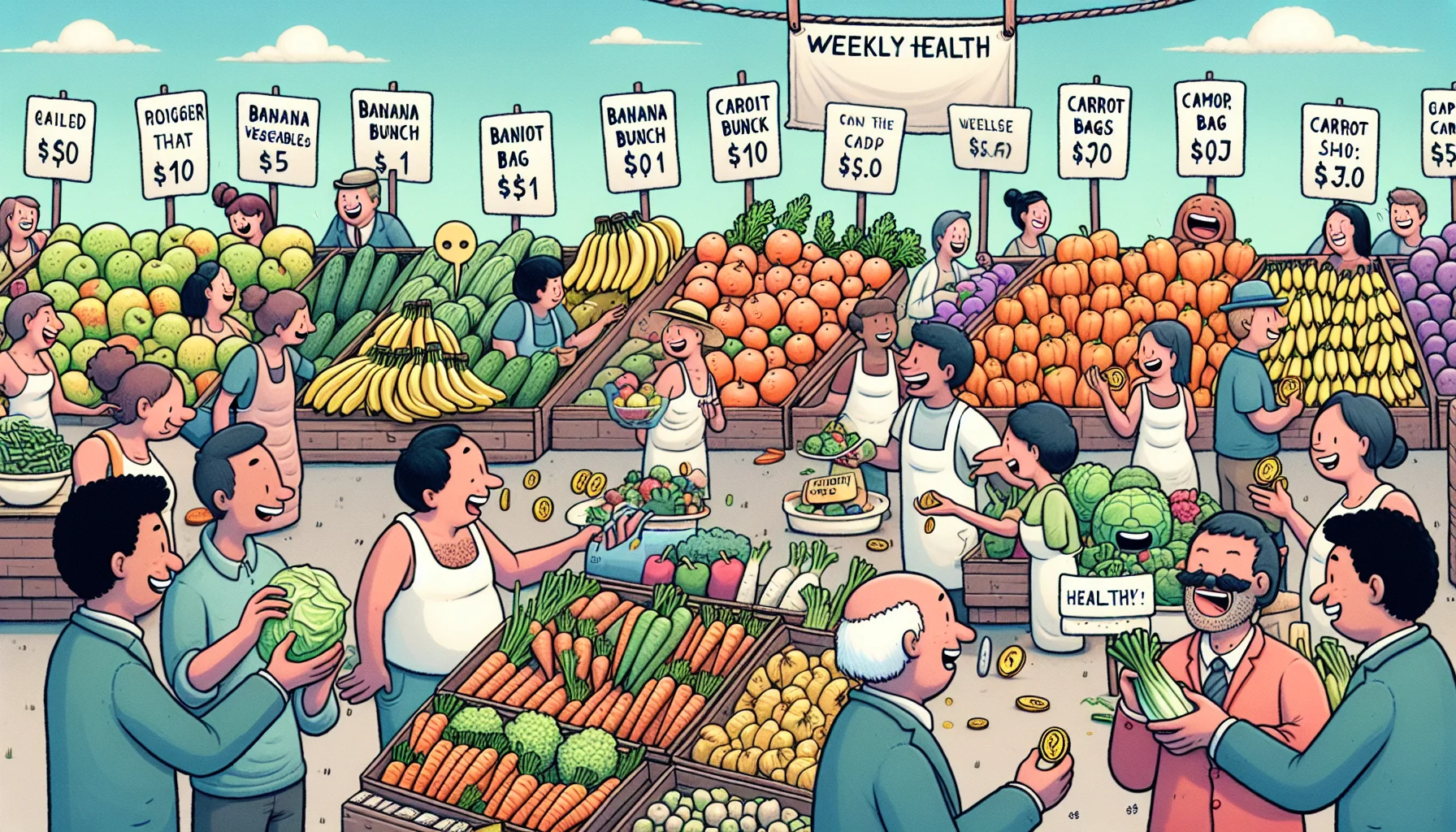Weekly Health Insight Quiz
Test Your Knowledge
Question of
Weekly Health Insight: Your Guide to Healthy Eating
Healthy eating is more than just a diet; it's a lifestyle that emphasizes the consumption of nutritious foods that nourish the body and enhance overall well-being. It involves choosing a variety of foods from all the food groups - fruits, vegetables, whole grains, proteins, and dairy - to ensure a balanced intake of essential nutrients. The importance of healthy eating cannot be overstated, as it is crucial for maintaining optimal body weight, reducing the risk of chronic diseases, and promoting overall health and longevity. By understanding and implementing the principles of healthy eating, individuals can make informed food choices that support their health goals and improve their quality of life.
Understanding Nutrients: The Foundation of Healthy Eating
A balanced diet is essential for maintaining good health and well-being. It provides the body with the necessary fuel and nutrients to function effectively. The basic nutrients required for a balanced diet include carbohydrates, proteins, fats, vitamins, and minerals. Carbohydrates are the body's main source of energy, proteins are crucial for the repair and growth of body tissues, fats provide a concentrated source of energy and help in the absorption of certain vitamins, vitamins are necessary for various biochemical processes in the body, and minerals are important for the structure of bones and teeth, as well as the functioning of various metabolic processes. Understanding and consuming the right balance of these nutrients is key to a healthy lifestyle.
Top 5 Superfoods to Include in Your Diet
- Blueberries - Packed with antioxidants and phytoflavinoids, these berries are also high in potassium and vitamin C, making them the top choice for doctors and nutritionists. Simple Incorporation: Add them to your morning cereal or smoothie.
- Salmon - Rich in Omega-3 fatty acids, which are essential for brain health and reducing inflammation. Simple Incorporation: Grill it with a sprinkle of herbs for a quick dinner.
- Kale - Loaded with vitamins A, C, and K, as well as minerals like potassium and calcium, Kale is a powerhouse for nutrients. Simple Incorporation: Toss it into salads or smoothies.
- Avocado - Full of healthy fats that help to keep you full and satiated. It's also high in vitamin E, potassium, and fiber. Simple Incorporation: Spread it on toast or add to salads.
- Quinoa - A complete protein containing all nine essential amino acids, quinoa is also high in fiber, iron, and magnesium. Simple Incorporation: Use it as a base for salads or as a side instead of rice.
Meal Planning Tips for a Healthier Lifestyle
Effective meal planning is key to maintaining a balanced and healthy diet throughout the week. Start by outlining your meals for the week before you go grocery shopping. This approach not only helps in making healthier food choices but also in avoiding impulse buys. Focus on incorporating a variety of foods in your plan, ensuring each meal contains a good balance of vegetables, fruits, proteins, and whole grains. Prepare some components of your meals in advance to save time and reduce the temptation to opt for less healthy options. Don't forget to stay flexible; life happens, and sometimes you'll need to adjust your plan. Remember, the goal is to make your diet healthier while also fitting into your lifestyle.
The Impact of Hydration on Your Health
Water plays a crucial role in maintaining various bodily functions, from regulating body temperature to ensuring the proper operation of organs. Adequate hydration supports digestion, nutrient absorption, and even helps improve concentration and mood. To stay hydrated, it's recommended to drink at least 8 glasses of water a day, though this can vary based on individual needs, activity levels, and environmental conditions. Incorporating fruits and vegetables with high water content into your diet, and carrying a water bottle for easy access to water throughout the day, are effective strategies for enhancing hydration. Remember, by the time you feel thirsty, you're already dehydrated, so it's important to drink water regularly, not just in response to thirst.
Understanding Food Labels: A Guide to Making Healthier Choices
| Label Component | What It Means |
|---|---|
| Serving Size | This section tells you the size of a single serving and the total number of servings per container. It's the basis for the rest of the information on the label. |
| Calories | Shows the amount of calories in one serving. This number helps you understand how much energy you get from a serving of this food. |
| Nutrient Percentages | These percentages, known as the % Daily Value (%DV), tell you how much of a nutrient in a serving of food contributes to a daily diet. 5% or less is considered low, and 20% or more is considered high. |
Weekly Recipe Recommendation: A Healthy Twist on Classic Dishes
This week, we're excited to share with you a delightful twist on a classic dish that not only promises to tantalize your taste buds but also aligns with your health goals. Our culinary journey is all about reinventing traditional recipes by substituting ingredients with healthier alternatives. These modifications ensure you can indulge in your favorite comfort foods without the guilt. Whether you're a seasoned chef or a kitchen novice, this recipe is designed to be simple, nutritious, and absolutely delicious. Stay tuned for a culinary adventure that proves healthy eating doesn't mean sacrificing flavor.












